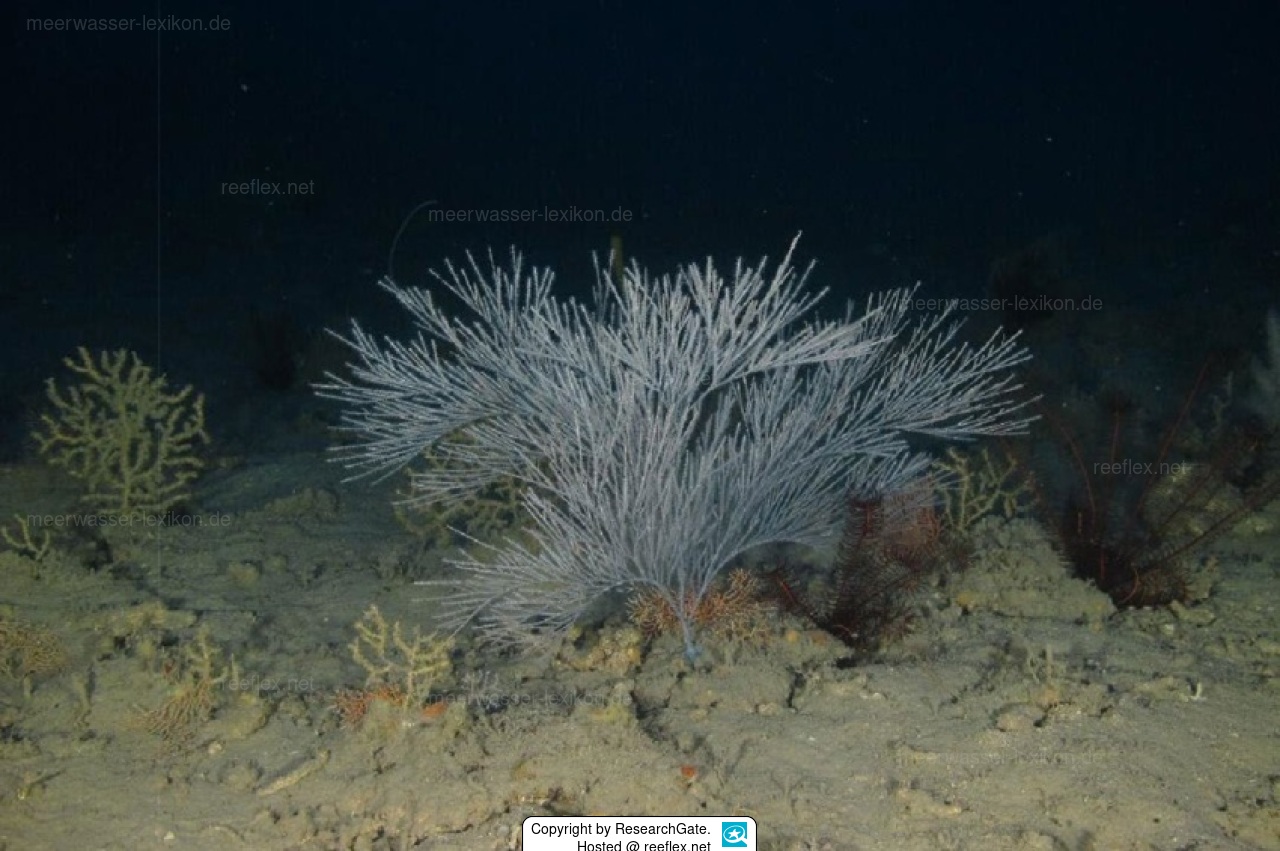Info
The oil spill in the Gulf of Mexico in 2010 was caused by the explosion of the Deepwater Horizon oil rig on April 20, 2010, which released an estimated 800 million liters of crude oil into the Gulf of Mexico, triggering one of the largest environmental disasters in history.
The photo of Aphanipathes pedata was taken by the NOAA/UNCW Undersea Vehicle Program in 2016 in Parker Bank, a deep-sea reef habitat in the Flower Garden Banks National Marine Sanctuary, six years after the terrible accident, which is nothing short of a minor miracle given that the distance from the site of the oil rig's sinking to Parker Bank is estimated to be only 130 kilometers.
Aphanipathes pedata forms a bushy, irregularly branched corallum with mostly straight, elongated, upward-pointing branches.
The polyps of black coral are white, cream-colored, or slightly pink due to the underlying brownish skeletal axis.
The small polyps, with a cross-section of 1.2–1.7 mm, are arranged in a single row on one side of the branches, with five to eight individuals per centimeter.
The tentacles of the polyps reach 0.5–1.0 mm in preserved material and are arranged in three almost evenly distributed pairs.
Aphanipathes pedata is azooxanthellate and requires a continuous current in its habitat to provide it with a regular supply of food.
As the coral lives in deep water, little information is available on this species.
We would like to express our sincere thanks to the NOAA/UNCW Undersea Vehicle Program for the photo of the coral.
The photo of Aphanipathes pedata was taken by the NOAA/UNCW Undersea Vehicle Program in 2016 in Parker Bank, a deep-sea reef habitat in the Flower Garden Banks National Marine Sanctuary, six years after the terrible accident, which is nothing short of a minor miracle given that the distance from the site of the oil rig's sinking to Parker Bank is estimated to be only 130 kilometers.
Aphanipathes pedata forms a bushy, irregularly branched corallum with mostly straight, elongated, upward-pointing branches.
The polyps of black coral are white, cream-colored, or slightly pink due to the underlying brownish skeletal axis.
The small polyps, with a cross-section of 1.2–1.7 mm, are arranged in a single row on one side of the branches, with five to eight individuals per centimeter.
The tentacles of the polyps reach 0.5–1.0 mm in preserved material and are arranged in three almost evenly distributed pairs.
Aphanipathes pedata is azooxanthellate and requires a continuous current in its habitat to provide it with a regular supply of food.
As the coral lives in deep water, little information is available on this species.
We would like to express our sincere thanks to the NOAA/UNCW Undersea Vehicle Program for the photo of the coral.







 ResearchGate
ResearchGate



